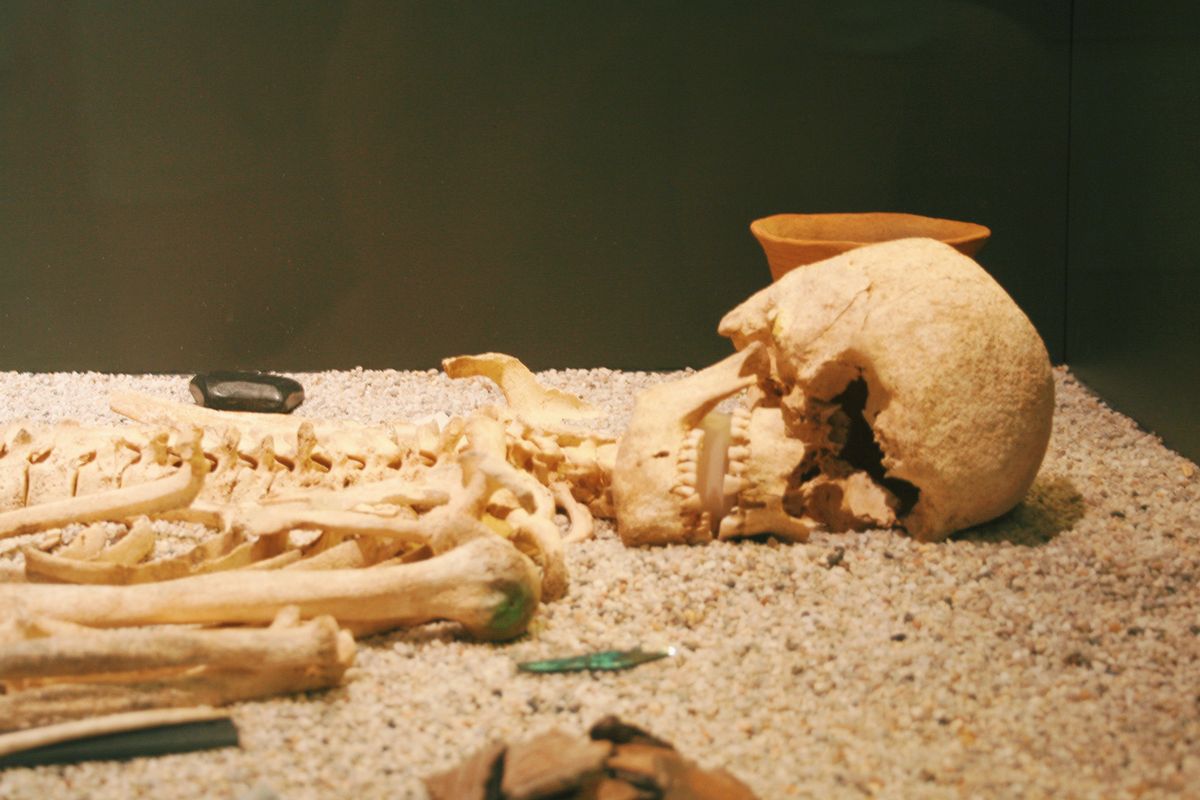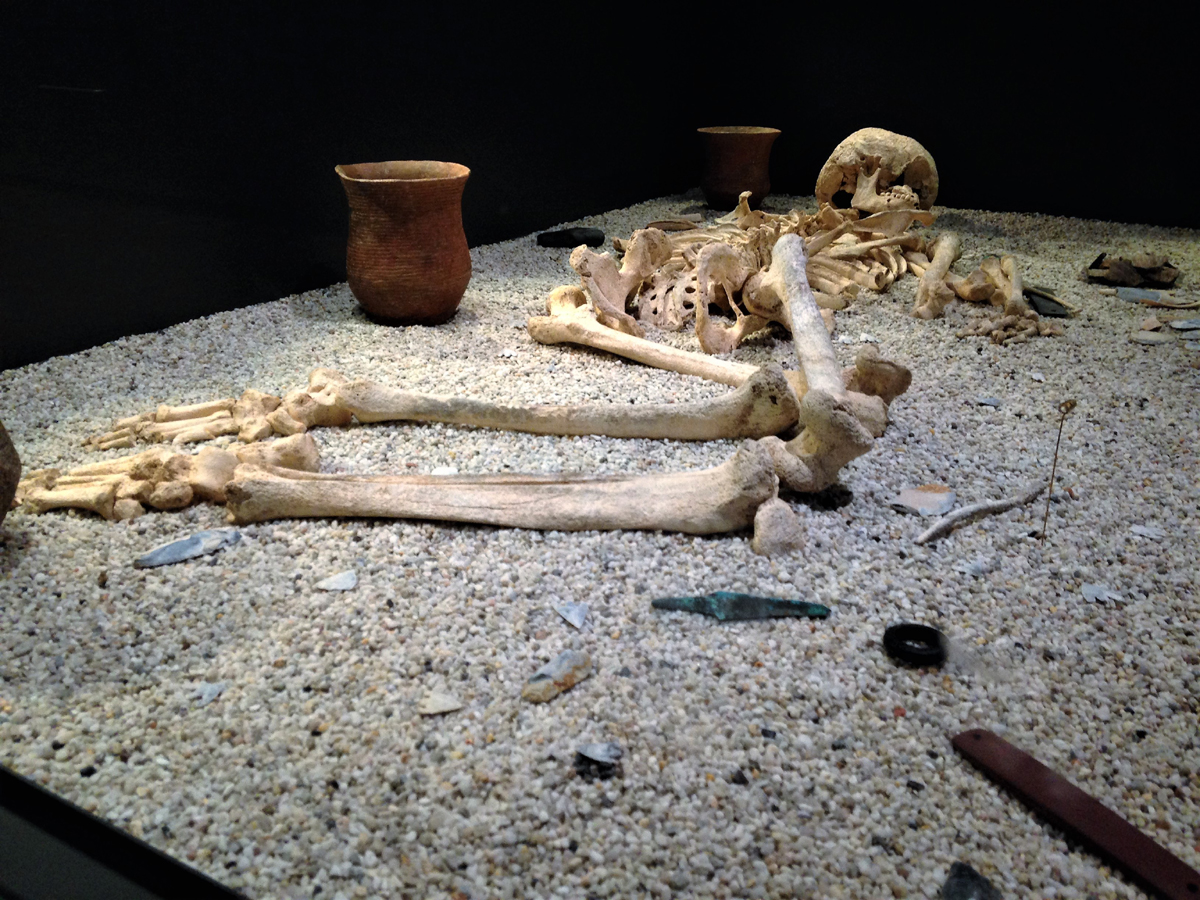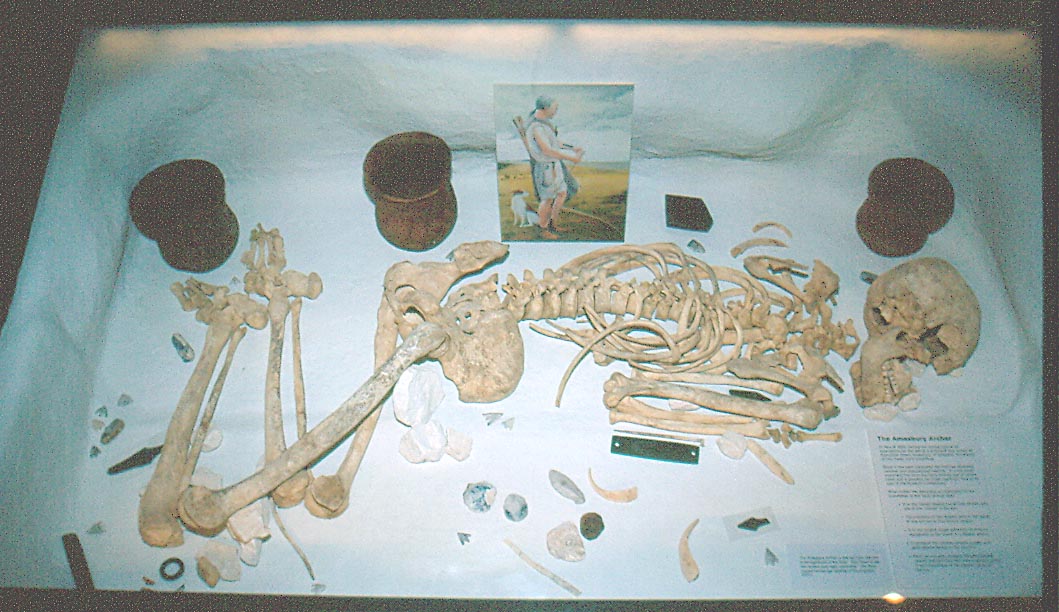The discovery of the Amesbury Archer’s tomb near Stonehenge in 2002 is one of the most significant archaeological finds in Europe. Dating back over 4,000 years, this burial offers crucial insights into early Bronze Age migration, metalworking, and social hierarchy. The Archer, a high-status individual, may have introduced metallurgical skills to Britain, playing a key role in its transformation.
The Discovery and Significance
Archaeologists uncovered the Archer’s grave 5 km from Stonehenge, marking it as one of the earliest and most elaborate Bell Beaker burials in Britain. His grave contained an unusually rich array of artifacts, suggesting he was a powerful figure.
A Man from the Alps: His Origins and Life
Analysis of his tooth enamel revealed that he did not grow up in Britain, but in Central Europe, likely in Switzerland, Austria, or Germany. He was between 35 and 45 years old at death, but his skeleton showed signs of severe physical hardship, including a missing left kneecap that caused a lifelong limp and chronic pain from a bone infection.

His Lavish Burial and Grave Goods
The Archer’s grave contained over 100 artifacts, the largest number ever found in a British Bell Beaker burial. Key items included:
- 18 flint arrowheads and two stone wrist bracers, indicating his status as an archer.
- Three copper knives and a cushion stone, tools linked to metalworking, suggesting he introduced early metallurgy to Britain.
- Two gold hair ornaments, the oldest gold artifacts in Britain, and four boars’ tusks, symbols of wealth or status.

His Role in Early Bronze Age Britain
His grave goods, continental origins, and burial near Stonehenge suggest he was more than just a skilled craftsman. He may have been a leader, an elite metalworker, or someone involved in major societal changes, possibly even contributing to the renovations of Stonehenge during his time. His burial reflects long-distance cultural exchange, proving Britain was deeply connected to wider European trade and knowledge networks.

A Lasting Legacy
The Amesbury Archer reshaped our understanding of migration, metallurgy, and elite status in Bronze Age Britain. His extraordinary grave reveals a world where technology, craftsmanship, and power were deeply intertwined, making him a key figure in Britain’s transition to the Bronze Age.
